Chapter 9: Migrating to 3G WWANs
|
|
Overview
This short chapter looks at migration approaches to third generation (3G). The chapter will be short for three reasons: (1) a major body of literature exists discussing this topic; (2) wireless wide area networks (WWANs) are not as critical to hotspot/nomadic networks as it might appear at first; and (3) with the expense and bureaucracy involved in deploying these national-level networks (including spectrum allocation and acquisition), it will be several years before services become ubiquitous and the speeds are higher than 384 Kbps. In any event, the (W)WAN-based data speed will always be less than the speed achieved by local area network (LAN) or wireless LAN (WLAN) techniques, and WWAN services will always be more expensive than WLAN-based services. WLAN-based technology is as likely to replace WLAN technology, as cable-based WAN technology is likely to replace cable-based LAN technology (remember LAN Emulation [LANE]?) The two kinds of technologies are aimed at different applications and have complementary roles to play. Also, hotspot services are specific to a small geographic area, WISP services are specific to a city, and WWAN services are specific to a region (multiple areas, cities, or regions can be supported by providers, respectively.) The general outline of the possible migration paths was already provided in Chapter 1, “Introduction to Wireless Personal Area Networks (WPANs), Public Access Locations (PALs), and Hotspot Services,” and Chapter 3, “Technologies for Hotspots.”
The migration path is a function of geography and the embedded base. Figure 9-1 depicts the anticipated evolution path for WWANs in time, location, and technology. This evolution is expected to require billions of dollars ($20 to $50 billion), so it will not come overnight, nor will it be cheap. At a more macro level, the following transitions are anticipated:
-
From one generic to many specialized radio access protocols
-
From industry-specific protocols to Internet Engineering Task Force (IETF)/Internet Protocol (IP)-oriented protocols
-
From hierarchical to dynamically routed backbone networks
-
From narrowband links to broadband links
-
From monolithic functions to distributed functions
-
From closed architectures to open Internet-based architectures
-
From 2G to 2.5G to 3G
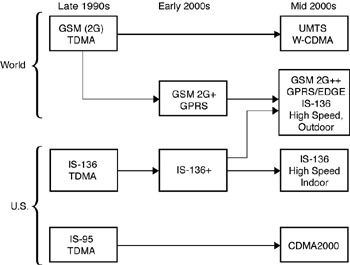
Figure 9-1: Evolution paths for WWAN voice and data
To illustrate some of these points, Figure 9-2 depicts the transition from hierarchical networks to dynamically routed backbone networks. Figure 9–3 shows an all-IP WWAN of the future from a protocol and function point of view. Figure 9-4 explains how the control plane of such an all-IP network can be constructed using IETF/Institute of Electrical and Electronics Engineers (IEEE) standards. A core network with an all-IP architecture (see Figure 9-5) can be advantageous for a number of reasons:
-
With the growth in the use of the Internet, new IP-oriented applications keep emerging. With an all-IP architecture, it will be simpler to bring the benefits of these applications to the 3G customers.
-
Many IP-based protocols that are useful in wireless networks have already been developed or are in the process of development (such as the intserv/diffserv quality of service [QoS] protocols). Therefore, if the network is all IP, one can take advantage of these protocols.
-
Good multimedia/voice over IP (VoIP) support exists in IP. This could enable multimedia terminals in a 3G system to use H.323 and/or H.324.
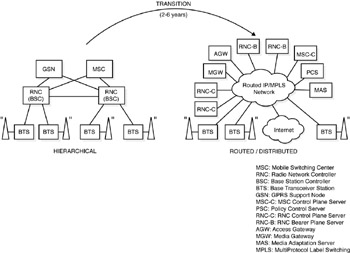
Figure 9-2: The transition of architecture in future networks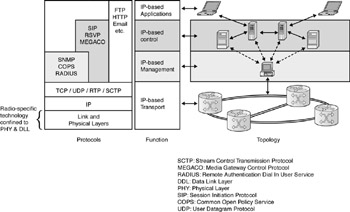
Figure 9-3: An all-IP network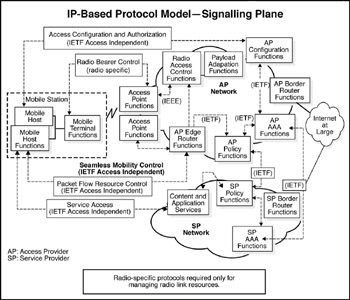
Figure 9-4: Control plane (signaling) of an all-IP wireless network (Source: Nortel Networks)[1]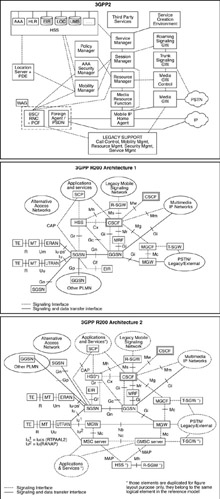
Figure 9-5: Movement to an all-IP networks (Source: Mark Tubinis Water Cove Network)
[1]Dr. Al Javed, CTO, Wireless Internet, Nortel Networks.
|
|
EAN: N/A
Pages: 88